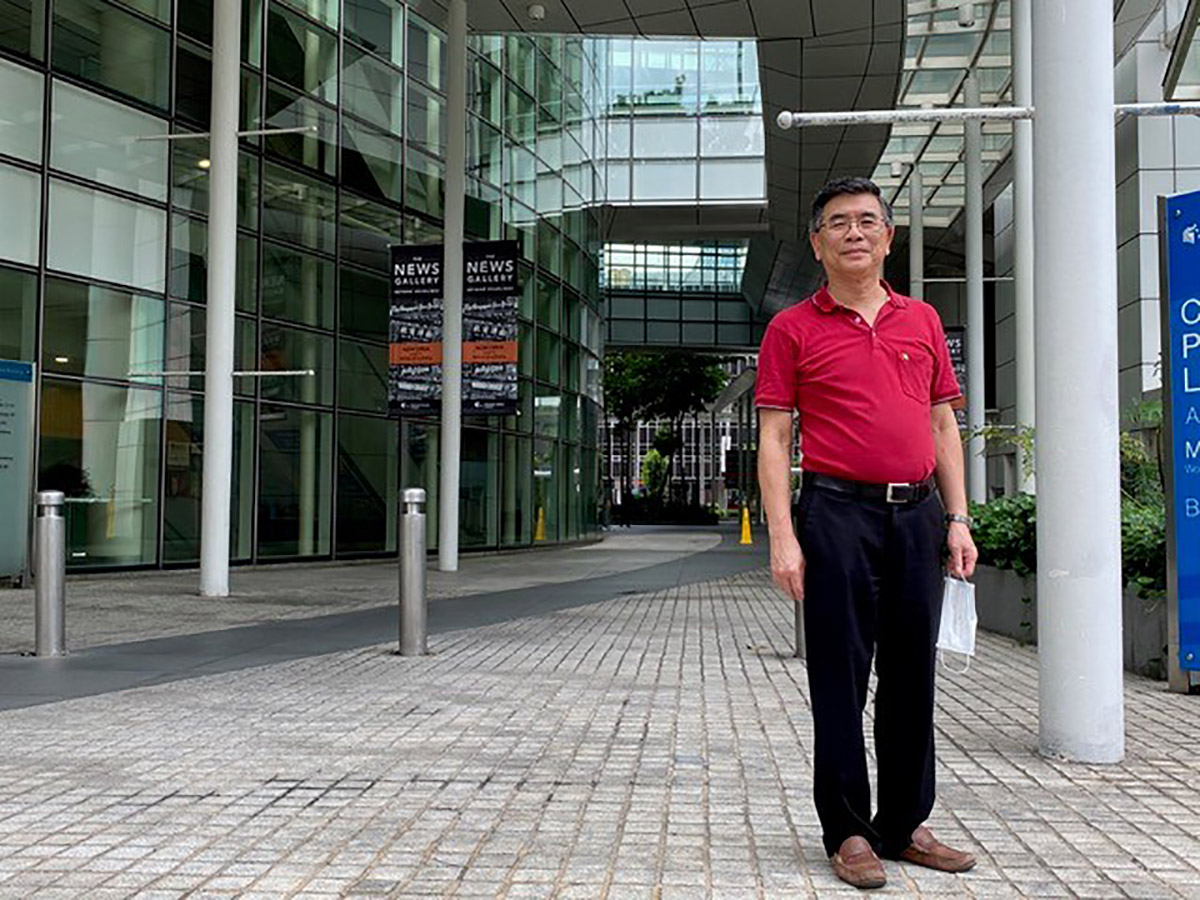This article is part of a series featuring the winners of the inaugural iBuildSG Distinguished Fellow award.
Six Built Environment sector leaders, whose professions straddle across academia, architects, builders, engineers and developers, have been conferred the title of iBuildSG Distinguished Fellow. Appointment as a Distinguished Fellow is the highest level of recognition given to senior Built Environment (BE) leaders under the iBuildSG Leadership Engagement and Development (LEAD) Framework for their leadership and immense contributions to the BE sector.
Beyond aesthetics and innovation, Professor Lam Khee Poh believes that the true purpose of architecture is to uplift people’s lives.
His awakening came in the mid-1980s. While pursuing his PhD in environmental design and architecture at Carnegie Mellon University (CMU) in the United States, the 63-year-old was inspired by the concept of total building performance and diagnostics.
The human-centred approach to design prioritises the health of occupants while championing sustainability – a concept that would become a trademark of his work, most notably in the design of the iconic National Library Building in 2000. It later became the first building to receive the Green Mark Platinum Award in 2005.
For example, he worked with architect Dr Ken Yeang, CEO of T.R. Hamzah & Yeang, who introduced bioclimatic design with landscaping to improve the indoor and outdoor thermal environment, which enhances occupant comfort. He also implemented a lighting control system to minimise artificial indoor lighting when there is sufficient natural light, which translates to energy savings.
“By far, the National Library Building is still my favourite project because it encompasses the total building performance indicators completely from beginning to end,” said Prof Lam, Provost’s Chair Professor of Architecture and Building and Dean of the School of Design and Environment at the National University of Singapore (NUS) since 2016.
“The building is still sustainable and resilient today because we invested fundamentally in good design and good systems.”
|
|
 Prof Lam Khee Poh in front of the National Library Building, Credit: National University of Singapore Prof Lam Khee Poh in front of the National Library Building, Credit: National University of Singapore
|
|
Constructing the future
Prof Lam’s ability to weave together environmental sustainability and building design has allowed him to make an impact beyond local shores.
In an illustrious career spanning over 30 years, he has made a Singapore imprint abroad by helming the design of notable award-winning buildings, including the innovative Center for Sustainable Landscapes at the Phipps Conservatory and Botanical Gardens in Pittsburgh, US.
Completed in 2012, the development generates all of its own energy and treats all storm and sanitary water captured on-site. It is the first and only building to meet five of the highest green certifications.
A year later, he was awarded the 2013 Alexander Schwarzkopf Prize for Technological Innovation from the US National Science Foundation “for exemplary research contribution to technology innovation and positive impact on technology, industry and society as a whole”.
While designing green buildings is his passion, so is educating the next generation for Prof Lam, who is a multi-hyphenate – working as an educator, researcher, architect and consultant.
After six years of study and practice in Nottingham, UK, he joined the NUS’ Department of Architecture from 1984 to 2003, before becoming a faculty member at CMU’s School of Architecture in the US. He returned to Singapore 13 years later and took up the position at NUS as Dean of the School of Design and Environment.
He remains a keen advocate of improving the built environment sector. His collaborative effort contributed to the launch of the Green Mark for Healthier Workplaces scheme, jointly by the Building and Construction Authority and the Health Promotion Board in 2018.
This has also set the tone for Singapore’s environmental sustainability and wellness for offices as the country grapples with a post-pandemic future.
Prof Lam is helping with this transition in his latest appointment – co-chair of the International WELL Building Institute’s Task Force on COVID-19 and other Respiratory Infections: Prevention and Preparedness, Resilience and Recovery.
Joining a global task force with more than 580 experts from 30 countries, he will examine the critical role buildings, organisations and communities play in reducing the health risks from COVID-19 and other infectious diseases.
“We cover everything, including acoustics, lighting, air quality, thermal comfort, spatial design and operational maintenance, which are the mandates of building performance. But ultimately, it is to serve human beings who are the occupants. At the heart of it, healthy cities are ultimately about healthy people,” he explained.
Inspiring the next generation
As an academic, he says one benefit is being able to keep up with the latest innovations and breakthroughs in the industry.
This, in turn, allows him to inspire his students to push the boundaries of energy-efficient and sustainable building techniques.
“My career path has always been inspired by good teachers and good mentors who have told me to think ahead of the curve,” he said.
“I strive to continue that legacy with my students.”